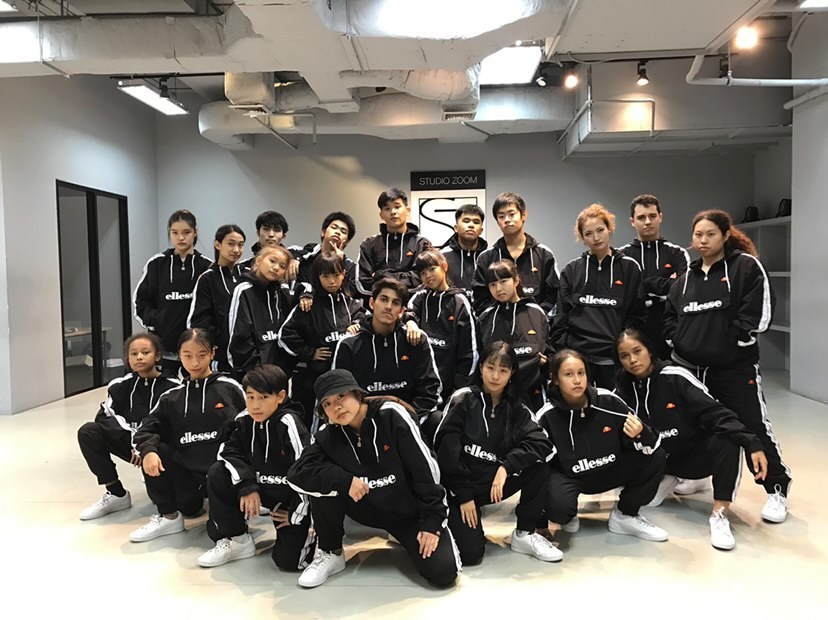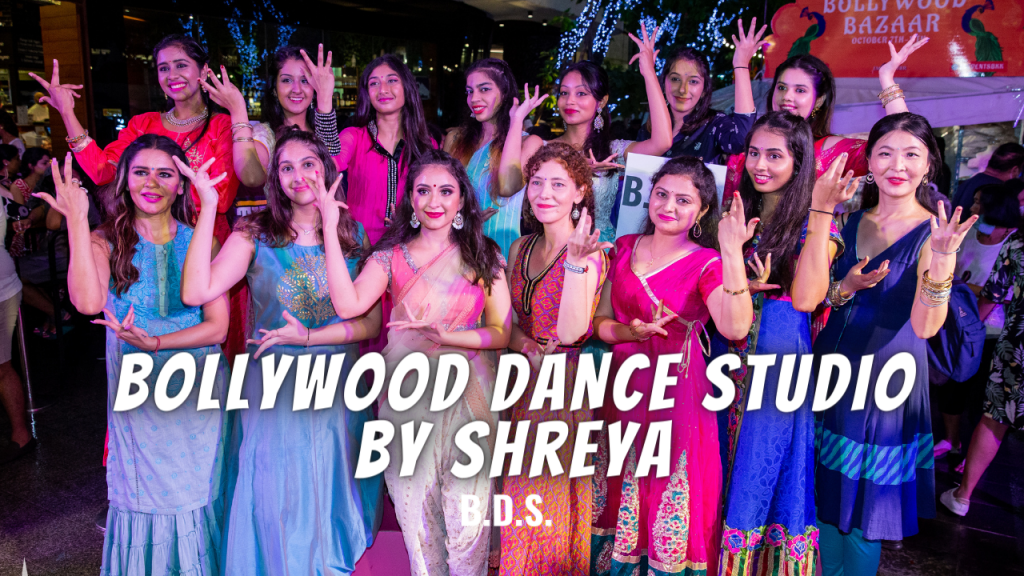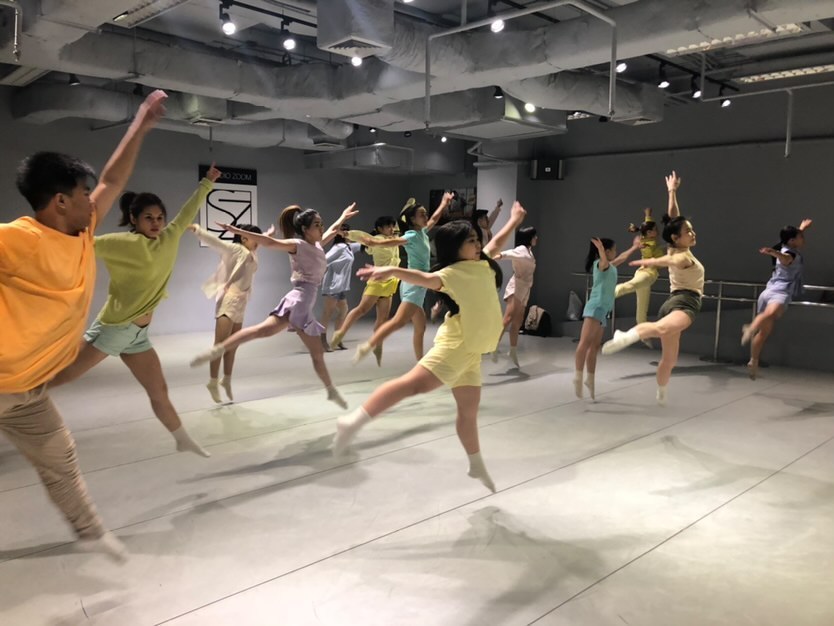Flexibility is key in more ways than one!
By Khushi Shah
The warmth of being in a studio, interacting with new people, openly expressing my feelings through dance, sharing in the different vibes of everyone around me, and having good flooring/space are just some elements that I miss about in-person dance classes. With things shifting online, a lot of that atmosphere has been lost. However, since dancing is quite personal and dear to me, I was keen to know how instructors out there are adjusting to the ‘new normal’ way of training and making the best out of it. Masala interviewed some renowned dance instructors in the community, who were happy to share their insights.
Kim Kasamatsu (Studio Zoom)
Studio Zoom (Instagram: @studiozoom39) is one of the more prominent dances studios in Bangkok, where dancers of different genres can come together to express their passion and energy, and connect with a dance crew. They offer classes for all levels, from beginner, to intermediate, to advanced. The studio has also expanded their offerings, with high standards of professional Hip Hop, Jazz, and Contemporary Dance classes, to name just a few.
How is online teaching different from physical classes?
Due to the current COVID situation, online classes have been the only platform for us to share dance lessons from our own space and still continue to be able to interact with everyone. We started online teaching last year, and it was initially very popular as we could not dance in the studio, but gradually the numbers kept dropping.
The reason is partly because people don’t feel motivated and can’t share in the energy of dancing together. Teaching and learning online requires a lot of preparation, e.g. focusing on the camera, checking the sound systems, sending the link to connect to the class, and ensuring the WiFi is stable. Whereas dancing in the studio is much easier, as we feel each other’s zeal better as we’re able to share a vibe of togetherness. However, because of the recent situation in Thailand, we have continued to teach online, and those who’ve continued the classes are accepting it more, discovering ways to share their voices and explore their own space. Recently, we’ve noticed great improvements in our students through our online classes. We’ve also created lesson plans and we give our students a thorough breakdown of choreographies, in order for them to maintain or scale up their skills.
What helped you create such a renowned studio in Bangkok?
Our philosophy is to build a good dance community along with professional, qualified instructors, with a mindset of teamwork, dedication, commitment, and humility.
What is your end goal or vision for the future of dance in Bangkok?
Our vision would be for the Bangkok dance community to work closely with one another, together with different studios, to create a secure community. We hope that they will all share each other’s vision of creating quality platforms to teach classes, and a bright future for the dance industry.
Shreya Sachdev (Bollywood Dance Studio by Shreya)
Bollywood Dance Studio by Shreya or BDS by Shreya (Instagram: @bdsbyshreya) is a dance studio located in the heart of Bangkok which focuses on South Asian culture. They’re a team of professionals who specialise in distinct Indian dance forms such as Kathak, Bollywood, Bhangra, Bharatnatyam, Bhangra Fusion, and more. If you’re desi and want to connect more with your roots, or even a non-desi who wants to learn more about Indian dance culture, signing up for one of their dance classes is a must.
How has dance changed your life?
Dancing has given me purpose in life. It first started as a hobby and developed into passion, one that helped me carve my path towards turning dancing into a career. My main purpose is to remind those in our community about the beauty of Indian dance forms. I feel the most happy when I am able to share my passion and inspire everyone around me, no matter their age, to start dancing, to pick up dancing again, or to just keep on dancing. Being able to inspire those around me, especially the younger generation, has changed my life and I hope it makes a difference in their lives too.
How have you been able to continue your profession in a country where dance isn’t as mainstream as it is in India?
I’ve always tried to push those around me to be the best versions of themselves, and this carried on when I wanted to start BDS by Shreya. If people really do want to learn Indian dance forms, why not teach them in the most authentic way possible? I’ve been extremely lucky to be able to put a team together that excels in different types of dance forms that may have not been popular in Bangkok before. TEAM BDS consists of Bitul for Bharatanatyam, Shuchita for Kathak, Akshata for Dance Fitness, Amy for Bhangra and myself for Bollywood.
By making it known that our team teaches various Indian dance forms, we were able to catch the attention of people in our community, which resulted in numerous opportunities to showcase our students’ and teams’ talent. Since 2019, we have seen a tremendous growth in the number of local and international students. This helps us believe in the work we’re doing, and how well it has been received in our Thai-Indian community and beyond. With the same love and support, we hope to continue for many years forward.
How are you able to curate choreography and music for discrete age groups while online?
Our team was able to perfect their process while shifting from in-person to online classes. With any age group, it takes a few classes to understand what type of moves and songs they enjoy. For our kids who learn Bollywood dance, we often encourage them to add their own moves to the choreography. This is a great way to spark their creativity! Our Indian Classical dance classes are more structured, so we do have a starting age for those classes. It is important for teachers to be aware of how well their students are grasping the steps. If we have choreographed the song before the class, and during the lesson our students aren’t able to cope, then we have to change the steps on the spot. We also make sure that our students feel comfortable enough to tell us that they find that particular step challenging. This is how we create and adapt our choreographies for different age groups, even while online.
Pooja Pathela (Dance with Pooja)
Pooja Pathela is a passionate wedding choreographer whose studio, Dance with Pooja (Instagram: @pooja_pathela) is a one-stop service for all the potential grooms and brides out there, and dancers willing to perform at wedding sangeets, mehendis, receptions, and more. Her team helps with everything from the song selection, rehearsals, and prop arrangements, to backstage co-ordination, ensuring a perfect wedding for your loved ones.
What is your training and background in dance?
I did my creative dance certificate training under Rizza Dance Company in Bangkok. I also went to Mumbai for a month, attended 30+ workshops, and learnt from different teachers. YouTube is also a great online teacher, with which you can keep learning and growing at your own pace.
How have you remained consistent while shifting online and conducting classes? Or did you have to take a break?
Once the lockdown was announced, I didn’t get to online teaching right away. I wanted to take a little break as before lockdown, back-to-back weddings were taking place and my daily routine was teaching dance from one location to another all day long. So the initial month of lockdown was a little pause for myself. After I was recharged, I thought, ‘let’s continue to spread the love and joy of dancing to online platforms.’ I then started taking online Bolly-Dancercise sessions. It’s an hour to forget everything and just dance. The outcome was that I felt totally refreshed, while also shedding calories. It was one of the best decisions I made during the lockdown period.
How do you inspire your students online vs in person?
Before I start my dancercise online, I will have a small briefing telling my students to just “dance their heart out,” follow along, and enjoy the music. During the class, I will keep boosting up their energy and shout out to “keep going.” Towards the end of the session, I will ask everyone to tell us their favorite Bollywood songs and we all dance to them. In this way, they will feel involved.
It is very different from being in person. The collective positive energy and vibes exchanged when dancing can be felt far more prominently in-person compared to online teaching. It just makes you feel altogether alive. However, even online classes still make us happy, as they’re the best thing that can be done during the current situation.
Tae Suzuki (Individual and Zoom Studio)
Tae Suzuki (Instagram: @taesuzuki.224) is an instructor at Zoom Studio who has taught in both Bangkok and Japan. She has expertise in HipHop, Street Jazz, and Freestyle. When joining her studio, get ready to know more about authentic and raw types of dances.
Having taught in multiple countries, how does your exposure to dance in different cultures influence your choreographies?
I mainly teach in Bangkok and my hometown, Nagoya, Japan, when I go back there sometimes. I was in Japan when I started to dance, and I had experience as a dance student in New York, so I’ve tried to pick up meaningful points from my instructors from both countries.
In Japan, I always took small classes of about 5-10 people. Choreographies were short but instructors cared about each student, gave advice, and talked like friends after every class. I felt close to the instructors and community, and that enabled me to continue dancing for a long time.
In New York City, there were lots of students from all over the world. Each class was big, with around 30-40 people, and the dance pieces were lengthy. Thus, if you were not good enough, teachers wouldn’t remember you and I couldn’t ask them for advice confidently. Those experiences made me better at recalling long choreographies and also helped me explore myself individually better through constant practices, self correction, and commitment that the U.S. dance culture had.
Today, my style of teaching uses long and difficult dance steps, while still closely observing each student so I could tell them what they should improve on. I mixed all the knowledge that I encountered in Japan and NYC.
How do you help students who aren’t able to catch up or are feeling behind?
I try to see each person individually and think about what they should work on to get better. However, some of them just come to class for fun so my advice will be stressful for them. I try to fix their technique, approach, and expressions while they’re learning and practicing the steps, while trying to recognise who needs advice and who does not. I will always encourage them by saying, “If you get at least one step from this class, you have succeeded.” My teacher in Japan also gave me this wise advice when I first started, which made me want to keep taking classes.










